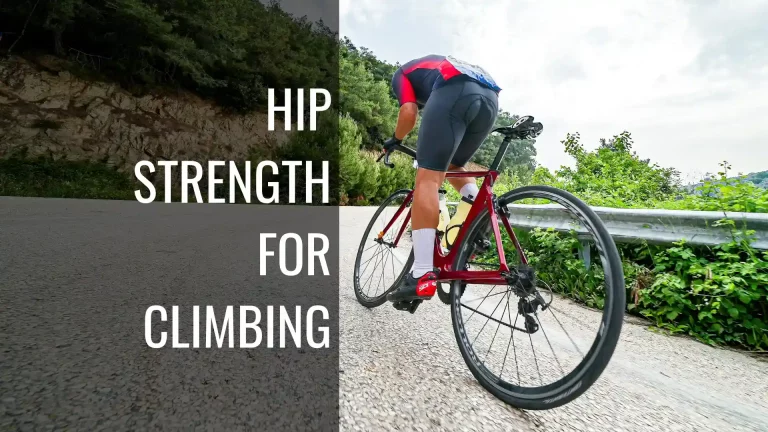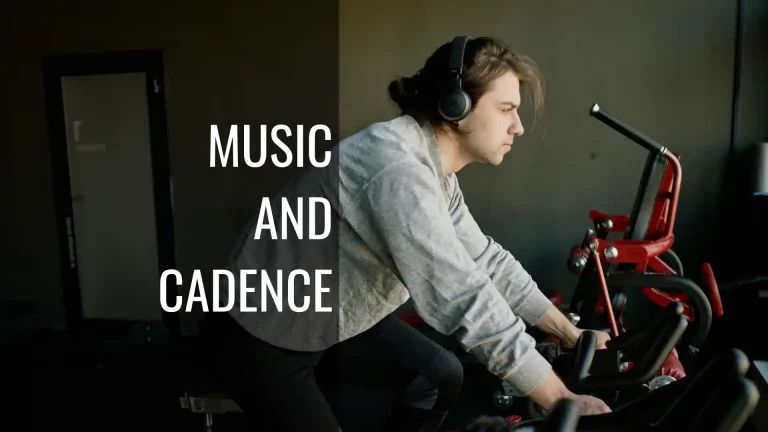
Cooler winds and fall leaves means just one thing – gravel bike season. If you are in the market for a new gravel bike, you have come to the right place to help you choose the right bike.
Table of Contents
Gravel Bike Basics
The gravel bike, in the most general description, is something you can ride on rough surfaces. It is not technically a mountain bike, though you can find some similarities with one. This post provides a solid comparison between a road bike and a gravel bike.
First, the frames are a little more robust. Gravel bikes are suitable for non-paved surfaces. So the frame has to be durable to put up with the rattles and “shocks” of riding on gravel, rocks, stones, roots, etc. So thicker down-tubes, head-tubes, and chain- stays provide this needed support and cushion.
Another difference between a gravel bike and another bikes is that you can attach bags and other travel essentials to the bike. Gravel bikes are ideal for bike-packing trips. So storage for longer trips is essential. So you see grommets on the fork, the down-tube, and seat stays to attach panniers and bags.
Because of the above two reasons, thicker tires are preferred for traction on loose terrain and for comfort on longer rides. A road bike, by design, is aimed at speed and lightness. Adding stiffer grommets and thicker tires makes it slower. A gravel rider, on the other hand, is not looking for speed. Some people have a gravel bike and use a separate set of wheels with road bike tires, which they can change depending on where they want to ride. The seprerate wheeel enable gravel bike riders to ride on both paved and non-paved roads.
Gravel bikes also have a single front chain ring and a rear gear range. This is specific to the rider and their gearing preferences.
Gravel Bike Components
Frame
A gravel bike frame has lots of options to choose from. Aluminum frames are the most common and also cheaper. Carbon frames are more expensive but are stiffer and more shock-absorbing than aluminum frames. Steel frames are also available but are heavier than both aluminum and carbon and is not as popular. You can’t go wrong with your choice of frame material. But for a beginner, an aluminum frame would suit most of what you are looking for.
One thing to keep in mind is the storage options on the frame. Even though you might just be starting out, go with a frame with grommets and bag-loading options, so you have the ability to carry extra gear if you are interested in long rides and bike-packing trips.
Brakes
Most of the gravel bikes today come with disc brakes. But you might occasionally come across one with rim brakes. Both options are good and will fit a variety of riding conditions.
Gearing
Gravel bikes are suitable for non-paved paths with loose gravel, rocks, roots, etc. As a result, speed is not of utmost importance, but the ability to navigate these uneven surfaces is. So these bikes usually come with a single front chain ring with multiple rear cassettes to give the rider gearing options to keep riding over these “obstacles”.
Handlebars
Gravel bikes have handlebars that are very similar to road bikes. The design gives riders more options to place their hands when riding over rough surfaces. If you are coming from riding a mountain bike, it will take some time to get used to the gravel handlebars, brakes, and gear shifter.
Seats
One of the critical components is the bike seat (saddle). The bike you get will come with a seat, but you can change to a more comfortable one. You can also follow this guide to make the bike seat more comfortable.
Bike seats are not supposed to be soft and cushioning. Cycling shorts (or liner shorts) are the ones that offer a comfortable ride. Get a pair of comfortable cycling shorts during your bike purchase.
Pedals
The options for pedals are either flats or clip-less. Flat pedals, you can use with any shoes. Clip-less pedals, contrary to the name, are those where you need specific cleats that attach to the bottom of your shoes, which then clips onto the pedals when riding. Cleats and pedals work in unison, so make sure you buy products that are compatible.
Clip-less pedals are more efficient, as they enable power to be transferred on both the down-stoke and up-stroke as you pedal. When you stop, you need to “unclip” quickly before you lose balance. Flats, on the other hand, only enable you to transfer power on the down-stroke, but is easy to free your feet when trying to stop.
You can start with the flats and add clip-less as you add more miles and get a feel for the gravel bike and your riding style.
Gravel Bike Accessories
Gravel bike accessories fall into two categories – bike accessories and rider accessories. Use this guide on what to wear mountain biking to give you an idea of what to plan for.
Bike Accessories
Bike lights
If your gravel rides take you long into the night or early morning, you would need bike lights to both see the path in front and for others to see you. Bike lights – both headlights and rear lights, increase safety by improving your visbility.
Fendors/ splash guards
Fendors and splash guards help protect the rider and the bike from road debris and water. If your ride is through streams and other water bodies, these can help contain the water within the wheels and tires and keep your downtube and legs dry. The same is true of preventing gravel and loose stones from chipping paint on the bike. Your riding style will determine your choice of fendors and splash guards.
Rider Accessory
Clothes
Gravel bike attire falls between those of road bike riding and mountain biking. You can wear a road jersey with mountain bike shorts and vice versa. One thing to remember is the shorts. Experts recomend shorts with a liner and a cushion. You’ll need this cushioning on the bike as the seats tend to be on the harder side.
Gloves
Mountain bike gloves, with their gel padding, can be used when gravel riding. The gels help provide some comfort on rough terrain. The choices are plenty, so it comes down to fit and personal preference. Check this out on how to choose mountain bike gloves.
Sunglasses
The right sunglasses prevent gravel, sand, and other debris getting into your eyes. You’ll also need them in fall, when the sun pokes through the leaves at weird angles.
Helmet
Wearing a helmet when riding is highly recommended. There are, again, plenty of options. Try to get something with MIPS technology, as that helps mitigate concussions in case of a serious accident.
Gravel Bike Brands
All major bicycle brands today have gravel bike options. As this branch of cycling keeps increasing in popularity there will only be more gravel-specific manufacturers coming onto the scene, increasing options for consumers. The number of current manufacturers are plenty, and this is not an exhaustive list. You’ll find your choice in any of these. Today most bicycle manufacturers offer more than just one type of bike.
Major bicycle brands offering gravel bikes include Trek, Specialized, Cannondale, Scott, Canyon, Giant
Smaller brands offering gravel bikes include Poseidon, Salsa, Surly, Ribble, Lauf, Orbea, Focus, Moots, Marin
Gravel Bike Questions
Which Trails are Best for Gravel Bikes?
Gravel bikes are very versatile, by design. They can accommodate wider tires to get more traction on loose gravel, fire trails, and dirt roads. You can also put thinner tires to ride faster on paved roads, use it to carry pizza and groceries by installing panniers and frame bags, or just take a leisurely ride in a park. Technical mountain bike trails and rock gardens are generally not recommended just because those types of terrain requires thicker mountain bike tires and suspensions that gravel bike, in general, do not have. But you can build your own custom machine, just like I did, for those types of trails.
How Much do Gravel Bikes Cost?
A. Before you go for a new bike, try to see something in the used bike market. As with anything, interests change. If gravel biking is new for you, a used bike will save you a lot of money. If you like this new sport you can always upgrade to new components or a new bike. You would have had the time to experience and fine-tune your parts. But if you go for a new bike, you are looking at a minimum of $800 at your local bike shop.
Can I Take My Kid on a Gravel Bike Ride?
Yes, there are two types of baby/ kid carries – one with you with a baby carriage attached over the back wheels and one you “tow” behind you on a wheeled kid carrier. Both of these provide plenty of fun for you and your kid. Ensure you follow the safety instructions to fasten the supporting frame mounts for either option to keep the kid safe on the ride.
What is the Difference between a Cyclo-cross Bike and a Gravel bike?
A cyclo-cross bike is a gravel bike build around the specific purpose of racing across paved and rough off-road surfaces going around 2-mile closed loops. This type of bike includes thicker tires like a gravel bike to get more traction off-road and has shorter gear ranges similar to a road bike to go as fast as possible. The frame is also more aggressive and tailored for a race. Comfort is not critical, as most cyclo-cross races last not more than 45 minutes to an hour.
Get Out There and HAVE FUN!
The gravel bike will offer a new set of adventures for you and your riding friends. Whatever bike you choose, make sure you ride often. Components can help you get the most out of the trails and increase comfort. Try to go off the beaten path, as that’s where you make the best memories. Happy riding!
I hope you found this post useful! Please check out my cycling and recovery foods posts as well.



